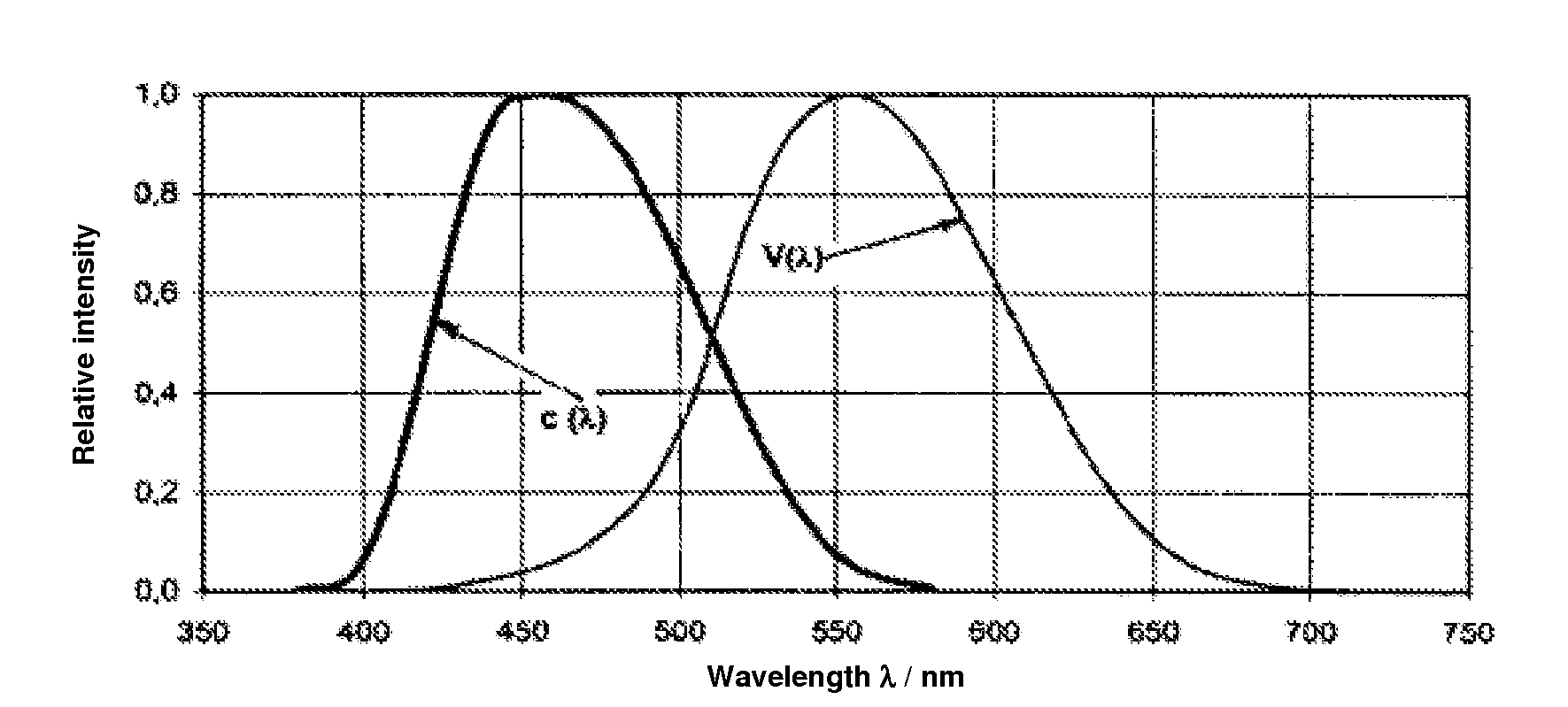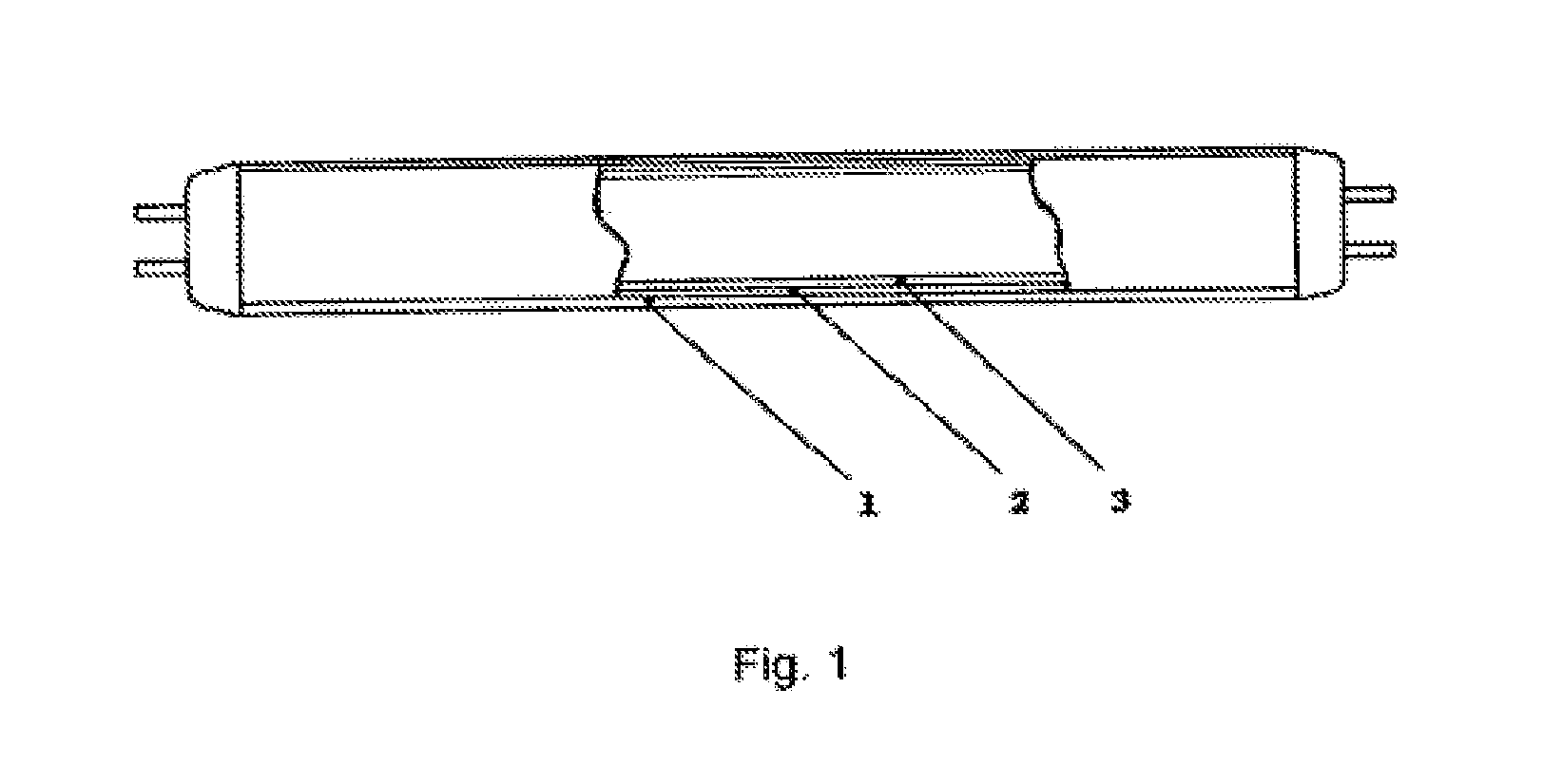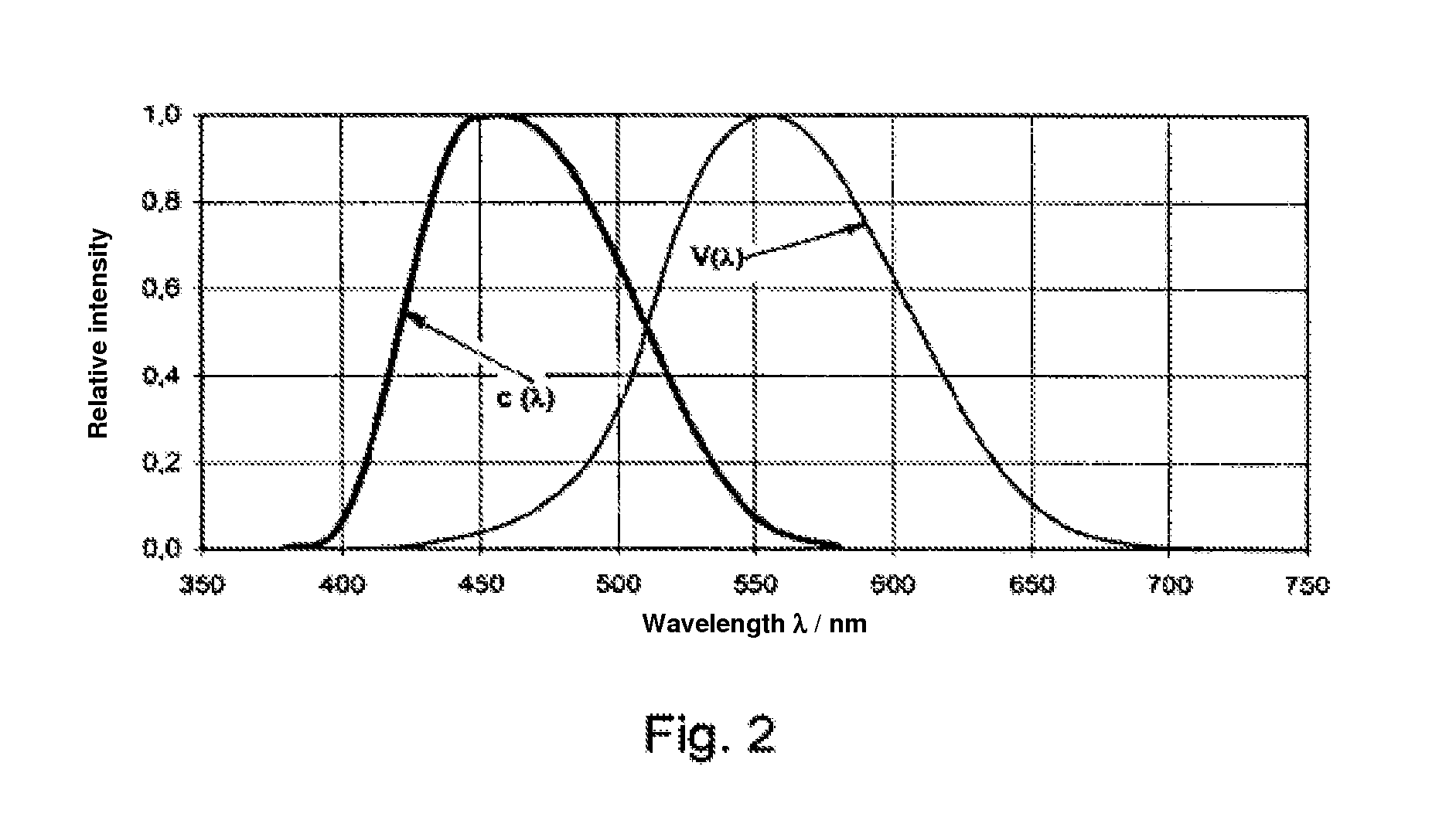Low-pressure gas-discharge lamp for influencing the endogenous melatonin balance
a gas-discharge lamp and endogenous melatonin technology, which is applied in the direction of discharge tube/lamp details, discharge tube luminescnet screen, therapy, etc., can solve the problems of high colour temperature and lack of good colour reproduction
- Summary
- Abstract
- Description
- Claims
- Application Information
AI Technical Summary
Benefits of technology
Problems solved by technology
Method used
Image
Examples
working example
[0034]The low-pressure gas-discharge lamp according to the invention will be explained in greater detail with reference to a working example.
[0035]Table 1 shows the technical light parameters of the two LT 18 W low-pressure gas-discharge lamps according to the invention compared with two conventional LT 18 W low-pressure gas-discharge lamps.
[0036]The low-pressure gas-discharge lamp according to the invention for influencing the endogenous melatonin balance has, according toFIG. 1, the glass discharge vessel 1 having the shape of a straight tube, which has at both ends electrodes for the supply of energy and is filled with a noble gas or noble-gas mixture and mercury. Phosphor layer 2 as base layer and, on top of the latter, phosphor layer 3 as top layer are applied one after the other to the inner glass surface of the discharge vessel.
[0037]FIG. 2 shows the circadian action function c(λ) and the spectral brightness sensitivity curve V(λ) of the LT 18 W low-pressure gas-discharge lam...
example 1
[0041]An Eu-activated alkaline-earth metal orthosilicate is used as blue-absorbent phosphor in the discharge vessel of the LT 18 W low-pressure gas-discharge lamp.
[0042]The base layer is produced by coating the blue-absorbent phosphor onto the inside of the glass flask as suspension, with hydroxyethylcellulose as binder and dimethylolurea as crosslinking agent. The layer thickness of the base layer is in accordance with the invention between 0.2 mg / cm2 and 2.0 mg / cm2, preferably 1.25 mg / cm2.
[0043]The coating used for the second layer as top layer is a phosphor mixture comprising the narrowband red-emitting phosphor yttrium oxide:Eu (YOX) and the narrowband green-emitting phosphor lanthanum phosphate:Ce,Tb (LAP) as suspension with polyethylene oxide as binder. The phosphor mixture consists of 60% to 99% of the phosphor YOX and 1% to 40% of the phosphor LAP, preferably 85% of the phosphor YOX and 15% of the phosphor LAP.
[0044]The layer thickness of the top layer is in accordance with ...
example 2
[0047]The coating of the glass flask of the LT 18 W low-pressure gas-discharge lamp is carried out with the phosphor YAG as base layer. The coating of the top layer is carried out analogously to Example 1.
[0048]The following technical light parameters are achieved with the LT 18 W low-pressure gas-discharge lamp produced in this way:
Light flux: 1408 lm
Lamp power: 18.0 W
Colour temperature: 1995 K
Colour reproduction: 81.3.
[0049]The light flux is evaluated in accordance with the spectral brightness sensitivity curve V(λ), as shown in FIG. 2, with a wavelength maximum of 550 nm.
[0050]In order to characterise the melatonin secretion of the low-pressure gas-discharge lamp according to the invention, use is made of the circadian effect factor, which is calculated from the ratio of the integral products of irradiation strength and circadian action function c(λ) and irradiation strength and spectral brightness sensitivity curve V(λ).
[0051]Table 1 shows the circadian effect factor of the LT 1...
PUM
 Login to View More
Login to View More Abstract
Description
Claims
Application Information
 Login to View More
Login to View More - R&D
- Intellectual Property
- Life Sciences
- Materials
- Tech Scout
- Unparalleled Data Quality
- Higher Quality Content
- 60% Fewer Hallucinations
Browse by: Latest US Patents, China's latest patents, Technical Efficacy Thesaurus, Application Domain, Technology Topic, Popular Technical Reports.
© 2025 PatSnap. All rights reserved.Legal|Privacy policy|Modern Slavery Act Transparency Statement|Sitemap|About US| Contact US: help@patsnap.com



